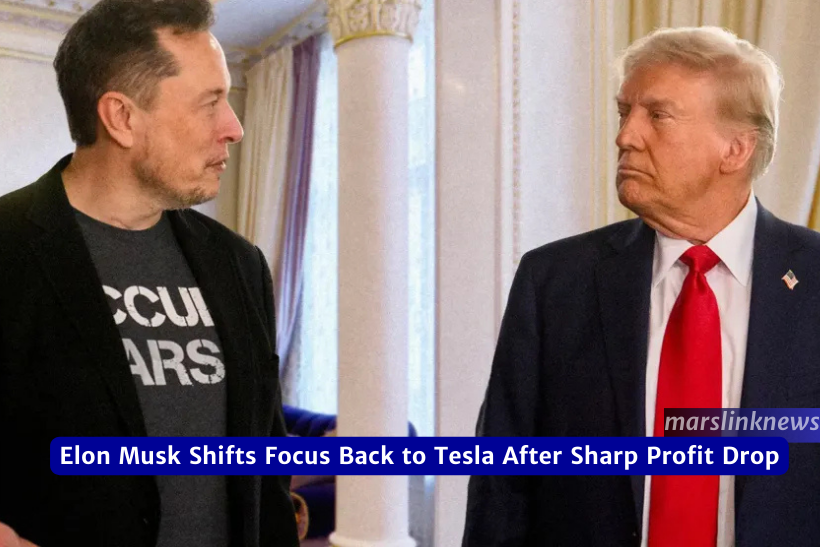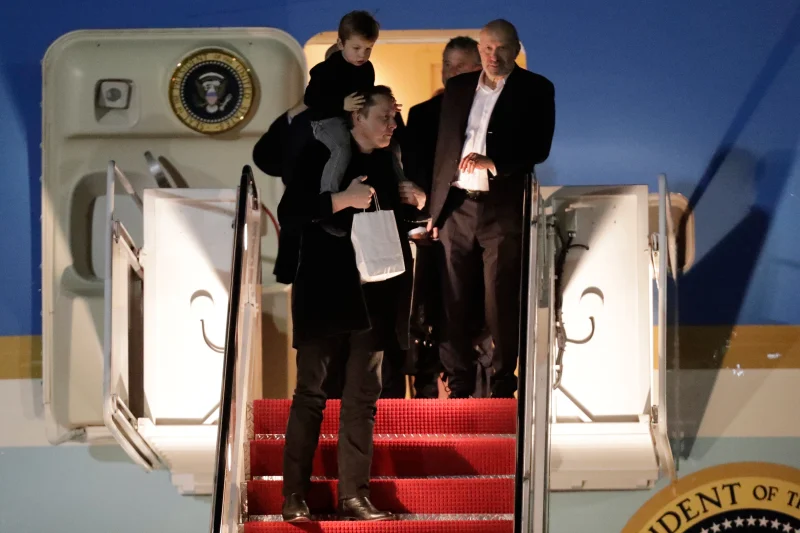Last Updated on 11 hours by Ashley Michael

Elon Musk has announced that he will reduce his involvement in the Trump administration’s cost-cutting plan and focus on leading Tesla, following a sharp decline in the electric carmaker’s profits. Musk, who played a key role in President Donald Trump‘s Department of Government Efficiency (DOGE), said he will now dedicate “ more time” to Tesla operations and limit his government work to just one or two days a week starting in May.
The large slog of work necessary to get the DOGE team in place and working with the government to get the financial house in order is mostly done,” Musk said during a conference call with Wall Street analysts. Tesla’s shares responded positively to the shift in focus, rising over 4.6% in after-hours trading, offering relief to investors concerned about Musk’s divided attention.
Tesla’s first-quarter earnings showed a 71% drop in net profit, falling to $409 million from $1.39 billion a year earlier. Revenue also fell from $21.3 billion to $19.3 billion, while gross profit fell from 17.4% to 16.3%. The decline coincided with a backlash against Musk’s political activism, which has drawn public criticism and even vandalism targeting Tesla’s businesses and infrastructure. Global sales fell 13% in the first quarter. with analysts linking consumer sentiment to Musk’s public role in the Trump administration.
Elon Musk Political Backlash, Tariffs, and Global Pressure

The backlash against Elon Musk’s political stance has been particularly strong in Europe, where he has expressed support for far-right politicians, further alienating Tesla buyers. As a result, the company’s public image has suffered, affecting sales.
Vandalism and arson attacks on Tesla’s infrastructure have been reported in several countries, and the brand has become a focal point for protests against Trump’s policies.
Tesla is also feeling the impact of Trump’s 25% tariff on imported vehicles. While the company makes most of its vehicles for the U.S. market in Texas and California, it relies on parts and materials imported from Mexico and other countries, which are now subject to new tariffs. The tariffs are expected to hit Tesla’s energy storage business particularly hard.
In China, Tesla has faced additional headwinds. Due to trade tensions, the company was recently forced to halt orders from mainland customers for its high-end Model S and Model X sedans. These models are primarily produced outside of China, while the Model Y and Model 3, made at Tesla’s Shanghai factory, continue to be sold domestically..
However, the ongoing geopolitical dispute and China’s retaliatory trade policies are expected to impact the company’s operations in the region.
Despite the broader challenges, Tesla saw a surge in regulatory debt sales, bringing in $595 million in the quarter, up from $442 million a year earlier. In addition, the company reported positive free cash flow of $2.2 billion, compared to $242 million in the same period last year.
Future Plans and Market Doubts
While reassuring investors of his renewed focus on Tesla, Elon Musk has reiterated the company’s key initiatives, including the rollout of a more affordable Model Y SUV in the first half of the year.
He also confirmed plans to launch a robotaxi service in Austin by June, adding that much of Tesla’s fleet could be operating autonomously by year’s end.

“There will be millions of Teslas operating autonomously in the second half of the year,” Elon Musk said. He suggested that full autonomy could allow passengers to sleep in the vehicle and wake up at their destination, predicting availability in many U.S. cities by the end of 2025.
However, analysts remain skeptical of Elon Musk’s ambitious claims. Sam Abuelsamid, an automotive analyst at Telemetry Insight, warned that Tesla’s system “is not robust enough to operate without supervision.” He added that the software still makes errors that could lead to accidents, especially in challenging conditions like sunlight or poor visibility.
Tesla’s Autopilot and Full Self-Driving systems remain under investigation by the National Highway Traffic Safety Administration. Questions continue to surface around whether these features alert drivers appropriately and whether the company’s branding misleads users about the vehicle’s capabilities.
As the electric vehicle landscape grows more competitive, Tesla is facing strong challenges from rivals. Chinese EV giant BYD has introduced batteries that can charge within minutes, while European manufacturers are launching new models with advanced features. These competitors are gaining traction as Elon Musk’s political affiliations continue to polarize consumers.